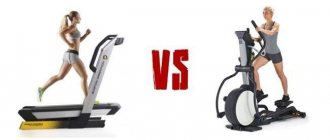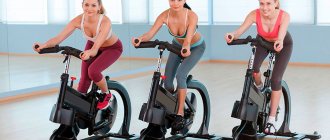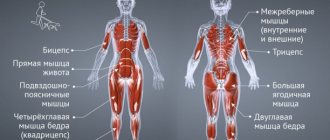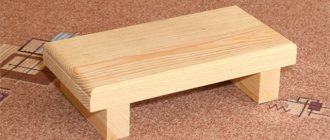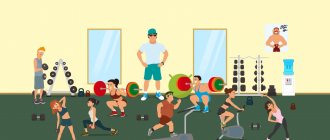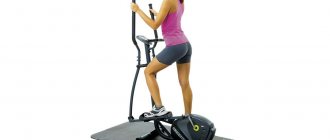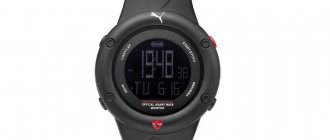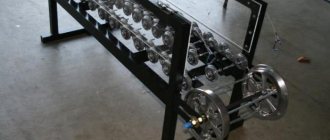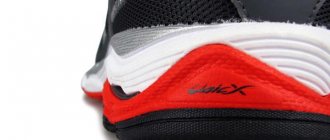The benefits of training on a treadmill
The benefits of running on a treadmill are the same as running outside. This includes training the cardiovascular system, developing endurance, strengthening the body and immunity, relieving stress, and losing excess weight. But a treadmill is still a training device, and it seriously helps in achieving a number of running goals.
Benefits of a treadmill:
- The ability to stick to the same pace for the selected time. Ideal for tempo workouts.
- Ability to run on smooth, cushioned surfaces. Ideal for preventing injuries and recovering from them.
- Possibility of training in hill running if there are no hills outside.
- An opportunity to develop the skill of drinking (and eating) on the run.
- Ability to set and maintain intervals without a stadium.
- It’s easier to count the cadence, train your breathing, control your technique, and manually count your pulse.
- No connection to the weather outside the window or any limiting circumstances.
Types of treadmills. Features, pros and cons of each
Mechanical treadmill
There are conventional (mechanical) and magnetic treadmills.
In both cases, the track operates without an electric drive and moves due to the efforts of the athlete. Models with a magnetic loading mechanism have a smoother ride. With ordinary ones, the canvas sometimes moves jerkily.
This type of treadmill is as close as possible to outdoor running conditions. The speed is set by the athlete himself - there is no need to interact with the monitor, which is very helpful during interval running.
Subscribe to “Marathon Man” on Telegram. Announcements of articles and useful selections every week.
Another plus is that such tracks do not require power. But this option is not suitable for runners with weak legs, people with varicose veins and areas of injury.
Mechanical paths either do not have or have a limited choice of slope angle, and you have to stop to change it. Among the models there are compact options weighing 20 kg, and there are huge ones half a meter long and weighing 200 kg. The range of prices is also huge - from 10,000 to 500,000 rubles.
Electric treadmill
It is driven by an electric motor and works with parameters set on the monitor. Allows you to control and maintain the pace, select a preset program, and adjust the inclination angle. There are heart rate sensors, sometimes built-in multimedia.
The downside is that it is a little further from simulating street running. If the program does not work with intervals, you will have to switch speeds manually, which can be inconvenient. Larger, more expensive, heavier. The range of this type of treadmill is perhaps the widest. Prices range from 20,000 to 1,000,000 rubles and more.
Folding and compact treadmills
Ideal for the home, because they were created for home use. They are less noisy, weigh less and take up very little space.
There are models without handrails. Even paths as thick as a book appeared. This track can be hidden under the bed or put in a closet.
But the disadvantages are also obvious - a limited number of programs, not all have an inclination angle, monitors most often have a minimum set of indicators (speed, time, distance), and the speeds on such tracks are very low - some do not develop a pace of more than 6-8 km/h , making them more of a walking trainer. Prices range from 30,000 to 80,000 rubles.
Professional treadmills
This type was invented for the gym. They are made of high-strength materials, have high wear resistance, and are packed with complex programs and multimedia.
Most likely, it will not be suitable as a treadmill for the home due to its dimensions, weight and price: up to half a meter in length, about 200 kg in weight, from 100,000 to 1,000,000 rubles and more.
Changing the inclination angle
Treadmills have the ability to change the inclination angle of the running belt, this happens in two ways:
- manually
- changing the angle of inclination using the display due to the built-in lifting motor.
On good treadmills, the incline changes using the keys work in parallel with the programs, increasing or decreasing the incline for the desired phase of the workout. We recommend. In mechanical treadmills, the incline angle is about 3-6 degrees. In treadmills with electric elevation, the angle can reach 22 degrees, which is very noticeable during training.
If your budget allows you to choose a treadmill with electronic incline, then buy one.
Heart rate monitoring and training programs
There are three levels of functional equipment of the treadmill for heart rate monitoring:
Base. Even the most basic mechanical treadmills are often equipped with manual heart rate sensors. The mounting on the brackets is unreliable, but at the same time they do a good job of reading the pulse and monitoring the time required for recovery. For the data to be correct, your hands must be wet and remain on the sensor for about 30 seconds. For accurate information you need to stop completely. It is better to choose a treadmill with a heart rate monitor.
Average. The treadmill comes with a chest strap or heart rate monitor that provides more detailed information about your heart rate. This allows you to quickly increase or decrease the intensity of your workouts to achieve an optimal heart rate. We recommend choosing just such treadmills; in extreme cases, buy a heart rate monitor separately. Do not buy tracks that cannot be connected to a heart rate monitor, they are extremely ineffective!
Professional. Treadmills at this level use heart rate watches, chest straps, or other compatible heart rate monitoring programs.
Training programs
Electric treadmills are equipped with a package of standard programs, plus a simulator that can contain cardio and custom programs, with the possibility of individual settings. Classic training programs:
- Interval
- Hills
- Fat Burning
- Cardio
We would like to focus on cardio programs. This is especially true in situations where there are disturbances in the functioning of the cardiovascular system. The cardio program allows you to monitor your heart rate during your workout:
- informing you with a signal that the maximum permissible heart rate has been exceeded;
- the simulator automatically reduces the load without creating an overload in the work of the cardiac system when the maximum permissible heart rate is exceeded;
The program works correctly when using a heart rate monitor. The most effective training is with wireless heart rate monitors, which allow you to display the most accurate values without disturbing the comfortable training conditions.
In other words, if the machine is not equipped with a wireless heart rate monitor, you will have to periodically hold on to the handrails on which the heart rate sensors are located, and they are often inconveniently located.
What does a treadmill consist of?
- Treadmill belt.
- Handrails with different lengths for different models (or no handrails).
- Monitor with indicators of speed, distance, time, programs and multimedia.
- Heart rate monitors (or none).
- The safe shutdown system is a key with a clothespin that extends from the treadmill with a string and is attached to clothing (this does not happen with mechanical treadmills, because the speed is set by the runner).
- Mechanism or engine-motor.
- Internal and external “hardware”: frame around the canvas, shock-absorbing layer - deck, compensators for floor unevenness.
- Additional accessories, such as transport wheels, a gadget holder, a compartment for a bottle or a glass of water.
Treadmill selection criteria
The criteria for choosing a treadmill can be divided into two parts: the right product for you and the right exercise machine for you. The product, in terms of its general characteristics, is relatively easy to use.
- Determine your budget. On the Russian market, prices for treadmills vary from 10,000 to 1,000,000 rubles.
- Estimate the dimensions of the treadmill and its weight. Mentally place a treadmill in your room. Does it fit? Will it go through all the doors? Will he get into the elevator? Will you be able to drag her on your own? Take the tape and measure the free area - you will immediately have several options to choose from.
- The third question is whether time, pace, heart rate, and speed monitors are needed. All treadmills have control panels, but you need to determine how advanced it should be.
- Consider how many people will use the treadmill and how often, and how much weight it can support. This is a criterion for choosing service life, build quality, materials, and so on.
- The noise the track makes. Find an opportunity to listen to the track before purchasing, so as not to conflict with your neighbors downstairs.
Security Settings
Security Key
A special magnet is installed on one side of such a key, which is attached directly to the console itself. On the other side of the key there is a special clip that is attached to the clothing of a person exercising on a treadmill.
If a person accidentally falls or trips while training, the key will fall from the console, which will automatically turn off the simulator. By using the safety key, you can avoid serious injury while using your treadmill at home. Therefore, it is recommended to purchase models that are equipped with such a key.
Handrails
The handrails located on the side parts of the simulator are necessary to secure a person in moments of accidental falls or when stumbling while running. Also, the handrails can protect a person when switching operating modes of the simulator. Before training, you need to make sure that the handrails will not interfere with the free movement of your arms while walking or running.
Automatic slow start
Treadmills equipped with this function, regardless of the selected mode, do not immediately start the belt at the speed set by the user. In this case, in order to minimize the possibility of injury, the belt begins to pick up its speed gradually, reaching the user-specified pace.
How to choose the width and length of a treadmill
The treadmill surface must be evaluated based on the training plans, physical parameters and capabilities of the runner.
- A treadmill with a width of 40 cm and a length of 120-140 cm is considered standard. These dimensions are suitable for a runner of almost any height and take up less space. These sizes are ideal for jogging at speeds of 6-8 km/h.
- To run at speeds of 10 km/h or more, you need a larger surface - at least 130x45 cm or even more.
- Tall runners need a long treadmill - about 150 cm.
- The faster and more powerful the running, the longer the stride when running and the longer the canvas should be.
- Width is a matter of comfort. The wider it is, the more convenient it is to train. Convenience range – 40-47 cm.
Rating of fast treadmills for home
If you've been running for a long time and want to increase your intensity, or are training for a sprint race, a fast treadmill will come in handy. The speed of such models can reach 22 kilometers per hour, which will ensure intense training.
UnixFit MX-910T: 14 workout programs and... a cup holder!
This treadmill is not only fast, but also powerful:
- Shlümdenger Electric engine with constant power of 3.5 horsepower, peak power of 4 horsepower;
- user weight up to 160 kilograms;
- there is a shock absorption system to reduce the load on the back and joints;
- 14 training programs;
- speed from 1 to 18 kilometers per hour;
- tilt angle – 15 degrees;
- there is a built-in heart rate monitor, and you can also connect wireless sensors thanks to built-in Bluetooth;
- Warranty – 24 months for the machine and 36 months for the frame.
The canvas is quite wide - 49 cm, so it is comfortable to practice. Automatic tilt angle adjustment allows you to quickly set up the machine. There are built-in speakers, so you can connect a player or smartphone and train to music.
Advantages:
Find out prices
- The engine power is enough for fast running;
- you can connect wireless heart rate sensors;
- wide canvas.
Flaws:
- price is above average;
- the exercise machine weighs 76 kilograms, so moving it around the house is problematic.
Xiaomi KingSmith K15: fast, but without tilt adjustment
The Xiaomi KingSmith K15 smart treadmill is controlled both via a touch screen and via a smartphone: just download the Mijia app to your phone. The track also has balanced technical characteristics:
- 1.25 horsepower engine;
- maximum permissible weight no more than 110 kilograms;
- there is a depreciation system;
- speed from 0.8 to 15 kilometers per hour;
- static tilt angle 4%;
- running belt measuring 48x120 centimeters.
The treadmill does not provide for tilt angle adjustment, so the load can only be increased by increasing the speed. The canvas has a suspended structure with shock-absorbing supports, which reduces the impact force while running. This solution also reduces the noise level produced.
Find out more
Advantages:
- all training data and machine settings are displayed in the smartphone application;
- suspended design and shock absorption system reduce the load on the knees and joints;
- Produces less noise than other treadmills.
Flaws:
- engine power is only 1.25 horsepower;
- The length of the blade may not be enough for tall users.
Torneo Carina T-507: automatic tilt adjustment for a reasonable price
Torneo offers a reliable and inexpensive treadmill. The trainer is powerful, fast and functional:
- engine power 2 horsepower;
- user weight up to 115 kilograms;
- 6 built-in programs;
- speed up to 18 kilometers per hour;
- tilt angle up to 12 degrees;
- heart rate monitor with handle mount.
The dimensions of the running belt are convenient for use even by tall people - 48x135 centimeters. The display shows all the necessary information: speed, inclination angle, distance, calories burned, pulse. The tilt of the blade is adjusted automatically. There are transport wheels, but since the device weighs 92 kg, moving it will not be easy.
Details
Advantages:
- reaches speeds of up to 18 kilometers per hour;
- the tilt angle is automatically adjusted;
- moderate cost.
Flaws:
- weighs 92 kilograms, so it is better to install statically;
- There is no user mode among the programs.
Treadmill speed and motor power
For electric treadmill models, it is important to evaluate the motor. It determines the service life of the simulator and the speeds it can produce.
- The maximum speed of the treadmill is the maximum speed of the belt. The faster you run, the more power you need. Power is also related to the maximum user weight stated in the treadmill specifications.
- In the specifications, motor power is written in kW or hp. - this is horsepower. It is necessary to evaluate two engine parameters - constant and peak power. The most important thing is constant power, because the track produces it during constant operation. It is indicated in the characteristics of the model and on the motor itself. Peak power is possible at moments of acceleration - it is not of decisive importance, but it is often indicated in the descriptions of tracks for advertising purposes.
- A 1.5 hp motor is suitable for the average consumer, approximately the same figure for all treadmills for individual use - from 1 to 2.5 hp. Due to the increased load, professional and commercial models are equipped with engines up to 5 hp.
- More powerful engines are more reliable in operation.
- Always look for speed instructions on your treadmill model. Sometimes it is not indicated on the websites, and you can get into trouble - buy, say, a cheap exercise machine and only find out at home that its maximum speed is 8 km/h.
Maximum user weight
First you need to pay attention to the maximum user weight, it is indicated by the manufacturer. It is important to know the user's weight limit because it directly affects the frame, belt and motor of the treadmill.
A reliable treadmill for regular home exercise is considered to be one that is designed for a maximum user weight of 120 kg. In this case, all tracks are purchased with a reserve - add at least 20 kilograms to the weight of the heaviest user.
It is important to remember that some unscrupulous sellers exaggerate these parameters to make the simulators look more powerful and reliable than they actually are. It is important to pay attention to the total weight of the track itself, engine sizes and customer reviews of its operation.
Of course, if possible, it is useful to have insurance against the maximum permissible values, i.e. safety margin, since the weight of the simulator stated in the specifications may not correspond to reality. Unscrupulous sellers can abuse this value, regardless of the consequences that may lead to injury and, as a result, harm to health.
Treadmill load levels and incline
When talking about the incline angle of a treadmill, in all training programs they mean a percentage of an angle of 90 degrees. It can be positive (running uphill) and negative (running downhill). The slope of the blade sets the load levels.
- The inclination range of the belt differs among treadmill models. The simplest and cheapest ones may not have a slope at all. It is not available, for example, in compact or simple mechanical ones.
- Electric models have finer adjustments to the inclination angle, and their inclination can be switched on the run. Expensive treadmills have the widest range of settings.
- Incline running can be an important part of your training. The biomechanics of the upward movement involve a variety of muscles, with particular emphasis on the back and front of the thighs and calves. And running uphill, in fact, brings you closer to practicing the movements for ideal running technique.
- Sometimes in preset running programs, effort is increased precisely by increasing the incline angle, and not by increasing speed.
Types and benefits
The widest range makes it difficult to choose a treadmill for the home: which one is better in terms of functionality, reliability, durability, comfort? It is difficult for inexperienced buyers to understand all the features and nuances. First, you need to understand the types and operating principles of sports cardio equipment for regular jogging (see Table 1).
| Treadmill view | The principle of rotation of a web stretched between shafts | Advantages | Flaws |
| Mechanical | Muscular strength of legs | Reliable design, simplified operation, electrical independence, simple rhythm adjustment, affordability, reduced weight and dimensions | Limited functionality, inaccurate adjustments, risk of jerking movements, increased stress on joints due to poor shock absorption, technical noise |
| Magnetic | Muscular strength of the legs (magnet system for smooth movement and braking of the blade) | No power supply, quiet operation without jerking, safe to use, long service life, reasonable cost, lightweight | Manual deck lift adjustment, significant ride stiffness, limited functionality |
| Electric (electronic) | Electric motor | Smooth and constant movement of the belt, good shock absorption, a computer with modes and training programs, remote adjustment of the deck angle (additional electric motor), display of parameters on the screen, including heart rate and calories burned | The need for an electrical network, increased price, mandatory maintenance, increased weight |
The problem of whether it’s worth buying a treadmill for home if you don’t have enough free space is successfully solved by folding and compact models. Transformable exercise machines fit seamlessly into small rooms and apartments. They have a magnetic, mechanical or electric drive. Easily folds up for storage against a wall or transport in a car. Children's variations in colorful design and environmentally friendly design, taking into account the physics and characteristics of a growing organism, stand out. Professional and commercial treadmills have an expanded range of angles and speeds, an impressive package of options and pre-installed programs, wear-resistant engines, and an improved elastomer-based shock absorption system.
Treadmill cushioning
Running on a treadmill is less risky than running on asphalt, thanks to the built-in shock absorption. The load softens and becomes similar to running on the ground.
The deck is responsible for shock absorption of the treadmill - a strong and smooth multi-layer plate under the running belt. This is the motion-responsive base of the treadmill, to which the shock absorbers are attached, and the shock absorbers are attached to the frame of the treadmill around the belt.
Silicone, rubber, spring or air compensator parts with varying degrees of rigidity are built in between the deck and the frame. This complex system absorbs foot impacts.
- The recommended thickness, which affects comfort during long runs, is 1.5-2 cm for running training; 2-2.5 cm – for both walking and running.
- With hard shock absorption, the leg “flies off”, as it should with the correct running technique, but it also gives the dynamics and economy of running. A more springy system is suitable for walking.
- Do not overlook the elasticity of the treadmill when choosing it if it will be used by older people, runners with weak ligaments or those recovering from injuries - the prevention of joint and ligament injuries is especially important for them.
- A good deck will make the walkway less noisy. The deck needs to be lubricated every 300 km or 30 hours of operation. Without this, the blade will begin to “stick” and the engine will be damaged.
Design Features
When choosing a treadmill for independent training, it is important to understand the structure and purpose of the main structural elements. You only need to buy a reliable exercise machine model that can cope with the proposed intensity of jogging, has an information panel and a sufficient set of adjustments, monitoring sensors, and functions.
Frame
Supporting contour (racks) made of profiled steel or aluminum. Forms the overall dimensions of length and width. Combines all units, components and mechanisms into a durable structure. Determines operational stability, permissible weight and dynamic loads, folding pattern and motion vector.
Running belt and deck
A ring-welded synthetic tape with an anti-slip coating is stretched between two parallel shafts on the frame. Creates conditions for running and walking in place due to cyclic movement. Available in regular (single layer) or thickened (two or more layers). It is laid on a flat platform-deck, which serves as a supporting base for the runner's feet and is designed to withstand significant impact.
By the way! The thickness of the tape varies from 1.6 to 3.3 mm. The thicker the material, the better the shock absorption, the quieter the run, and the less impact on the joints.
Control system and display
When choosing which treadmill is best to buy for your home, be sure to take into account the adjustment scheme, the quality of information visualization, and the ability to track your current condition and progress in general. The most convenient option is a push-button or touchscreen console with a display, available in full-color variations with a large diagonal. In mechanical models, changing the angle to increase or decrease the load vector requires stopping the movement and manually manipulating the frame location. In electric ones, just one click on the screen sensor or button is enough without stopping the run.
Handrails and heart rate monitor
Ergonomic holders with a tactile pleasant coating. Provide additional safety and allow you to maintain balance during exercise. Often supplemented with a built-in heart rate monitor to track recovery zones, fat burning (weight loss), training, and extreme loads. Also on the handrails there are buttons for switching the speed mode and adjusting the inclination. The most comfortable models are equipped with an accurate heart rate monitor with a chest (waist) belt and the option of transmitting data to the screen.
Treadmill stability
Before purchasing, it is a good idea to check not only the noise level, but also the stability of the treadmill. To do this, you again need to run on it, but in general the parameter is estimated by the weight of the simulator itself.
The heavier the treadmill, the more stable it is. This is also a guarantee of smooth running and overall stability of the simulator, so that it does not wobble from side to side and so that the simulator does not “run away” from the installation site.
The height adjusters in the supports of the exercise machine are also responsible for stability - you can tighten them yourself, at the same time smoothing out uneven floors and getting rid of swaying. It is also recommended to place a soft mat under the exercise machine for greater stability.
conclusions
You need to clearly understand that buying a good treadmill for running at home without serious expenses is very difficult. In the exercise equipment market, reliability, quality, and comfort are synonymous with high prices. At the same time, some popular brands can inflate the real cost, relying on their authority. But even in this case, it is better to overpay than to purchase low-quality equipment with a limited service life.
You should pay special attention to personal safety parameters and select a model with durable side rails or powerful handles that will allow you to stay on your feet in case of an accidental fall. For electric variations, a slow start mode and the presence of a magnetic security key are desirable.
Do not forget to plan in advance a place for convenient installation of a cardio exercise machine in the room, taking into account the location of the window, TV, and household outlet. The popular trend of using loggias in apartments requires careful consideration of the issue of floor vibration and noise insulation and thermal protection of equipment in the cold season due to increased sensitivity to low temperatures.
Most models provide for regular maintenance , which boils down to preventing shaft tension, removing abrasive particles and contaminants, and lubricating the blade for better gliding on the deck (after 30 hours of exercise or 300 km).
Treadmill frame
All technical parts of the treadmill are attached to the frame, which is located around the running belt. This is actually the skeleton of the entire structure, and it is on it that runners jump during training, so the frame must be strong.
Treadmill frames are made of steel. These are made for cheaper models. An aluminum frame is usually found in more expensive options, but it is preferable because it is lighter, stiffer, stronger and does not rust over time.
How to use a treadmill
It’s not enough to just turn on a track and run the first program you come across. When working on a treadmill, there are a few rules and tips to keep in mind:
- You can train according to your own program, if you have one. The treadmill allows you to implement tempo, interval, long-term, and recovery workouts.
- To bring working conditions closer to street conditions, set the slope angle (if possible) to 1.5-2 degrees. This is an imitation of air resistance and the difficulty of street terrain.
- Ventilate the room before training, ensure the supply of oxygen while running, do not place the treadmill in a dark room, in a cramped room, among a bunch of things.
- A separate question is how to choose running shoes for the treadmill. When choosing running sneakers, focus on sneakers designed for asphalt, lightweight, and with a breathable upper. Gaming and powerlifting models are not suitable for the treadmill. Running shoes must match your pronation type. Treadmill running shoes don’t need a powerful tread, nor do they need strong shock absorption.
- Clothes for running on a treadmill are the same as for indoor training. It is better to wear special running socks to prevent your feet from sweating.
- Stay safe. If there is a brake assist cord, don't ignore it - attach it to your clothing.
- Maintain general safety. Warm up before training and cool down after. Keep your back straight and do not look at your feet while running - look ahead of you, as with normal running.
- Do not jump off the treadmill at full speed or jump onto it if it is at high speed.
- When running, do not get too close to the monitors in front. Stay approximately in the middle of the canvas. Some models of treadmills, by the way, have special marks on the sides of the belt on the frame - they indicate exactly where you need to be while running.
- It's better not to run barefoot. Firstly, no one can guarantee the correctness of the technique. Secondly, it is not hygienic. Third, this is not treadmill safety.
FAQ:
Will I have to assemble the treadmill myself?
Treadmills don't require much assembly, but another pair of hands will still come in handy - in order to properly align the machine, it is heavy enough to handle the job yourself. All the necessary recommendations are in the manual, but if you wish, you can pay for the purchase along with the installation service, which has become available in all stores today.
How noisy are treadmills?
Quality treadmills are quiet. It is important to understand where the simulator will be located. For example, if you live in an apartment building, be sure to buy a treadmill mat.
If the structure of the house is concrete, especially monolithic, then great, the path will work very quietly. But if the house is old, with wooden structures at its core, then there is something to think about. Although the treadmill itself operates almost silently, your running, especially if you run fast and exercise in the middle of the night, can be heard by your neighbors - and they certainly won’t thank you for it. To soften and reduce noise vibration and at the same time protect wooden floors, rubber mats for treadmills are often used.
Can I listen to music while working out on a treadmill?
Most quality treadmills have this option. Many treadmills come with built-in headphones, speakers, and an MP3 jack.
How much space does a treadmill take up?
According to the instructions, it is recommended to leave a gap of 10 cm on the sides of the treadmill. Full information about the area occupied by exercise equipment can be found in the description. In addition, you should make sure that there are no obstacles behind the treadmill.
What should you do if your treadmill breaks down?
Many treadmill problems can be resolved on your own. You can obtain the necessary information from the service department or on the pages of our forum, where specific situations that may arise are described and instructions are provided for their prompt elimination.
Repairing faulty electrical equipment is a more complex process, and it is not recommended to do it yourself. Most treadmills come with an in-home repair and service warranty, so it's best to contact the warranty provider for assistance if necessary.
How easy and comfortable is it to move the treadmill?
It all depends on the brand and the features of the treadmill itself. Many types of good treadmills have wheels, making them easy to move indoors like a wheelbarrow. Although, to maintain motivation for regular exercise, it is recommended to place the machine in the same place.
Do treadmills have heart rate monitors?
This option is mandatory in high-quality treadmills. Many models include wrist heart rate monitors and devices with chest sensors for recording heart rate as additional accessories.
How can you use a treadmill?
It completely depends on the tasks you set. We talk about this on the forum. Check out our workouts and exercises.
How to care for a treadmill, what should you do regularly?
Treadmills require regular lubrication and tensioning of the running belt. Such work takes about 10 minutes and should be performed every 6-8 weeks. Systematic lubrication extends the life of the simulator and prevents malfunctions. The smoothness of the movement, which should resemble running on the street, depends on the tension of the running belt. There is a thread on the treadmill forum about treadmill maintenance to help you keep the machine in top condition.
It is worth paying attention to the area under the treadmill - it should be clean and empty. Vacuum and dust underneath the treadmill regularly. Any dirt or dust under the base of the machine will be collected by friction, and ultimately can cause many malfunctions.
Why do you need lubrication?
Silicone lubricant prevents wear and tear from friction on the running belt and deck (support boards). A similar procedure must be carried out every 6-8 weeks. According to statistics, in 80% of treadmill breakdowns, the cause is insufficient lubrication on the elements. We have created a separate topic on the forum about the process of lubrication of treadmill parts, there are answers to all questions.
Which treadmill is best for beginners?
If you have never run before and want to improve your physical fitness, pay attention to a treadmill in the range of 50 – 80 thousand rubles. This offer perfectly combines price and excellent quality. On these treadmills, you can start with a brisk walk and gradually build up to a 10K run if you want. Even if you are a beginner, it will still be more pleasant to use an electronic treadmill with an automatic incline and a good maximum speed. You will be able to see that a good treadmill itself stimulates and encourages you to improve your physical fitness.
Which treadmill is best for marathon training?
Treadmills are ideal for use in training for long-distance races. They allow you to set individual training goals and protect your knees from the effects of trail running. If you plan to train 3-4 times a week, we recommend a reliable treadmill from 100 thousand rubles. These are good treadmills for serious purposes, they will accompany you for many years and at the same time keep you motivated with their impeccable performance, as well as a huge deck for long legs and fast steps.
Pre-installed programs
The number and content of programs depends on the track model. But almost all electric models that have smart hardware built into them include:
- "Fitness test." Helps evaluate your preparation. It is useful to go through it at the beginning of classes, and then repeat it with some regularity.
- “Fat burning” and “Cardio” - aimed at cyclic work at low intensity or interval running.
- “Slides” – by changing the angle of the track, it simulates rough terrain.
- “Race” is a preset tempo workout.
- “Stadium” or “Circles” – cyclic repetitions to count the time of passing segments.
Most treadmills will set the time, speed, and incline percentage by default. Therefore, by and large, the choice of a preset program is successful if you come across a track with a convenient interval training setting - when the incline (or speed) of the running belt changes automatically and there is no need to press buttons on the monitor.
A universal solution would be manual mode and independent selection of a program for the treadmill.
Methods for adjusting the inclination of the running belt
The functionality of the simulator increases if it is possible to change the inclination of the running belt. There are two changing methods: mechanical and electronic.
Mechanical setting
Mechanical adjustment occurs thanks to the footrest at the rear of the treadmill. 2-3 levels of footrest height allow you to manipulate the back of the canvas to create a tilt. Such tracks have a simple and lightweight design, are less susceptible to breakdown due to the lack of a special motor, and are cheaper in price. The disadvantages include:
- low rise (no more than 10%);
- folding the simulator to change the angle of inclination, which is inconvenient during exercise;
- To fold the track, you need to move the canvas to the base position.
Electronic tuning
Modern exercise machines have electronic adjustment and an electric motor for this. This option complicates the design and increases the cost of the treadmill.
Increased slope gives:
- transferring the load to the legs and buttock muscles;
- increased energy consumption;
- reducing training time to burn the required number of calories;
- increased load when combining speed and inclination angle;
- variety and endurance training.
It is important to understand that it is wrong to immediately set the incline to 30% for jogging. It takes gradualism to get used to it and not get injured.
Treadmill training programs
- The 3-2-1-2-3 ladder is where you run 3 minutes slow, 2 fast, 2 slow, 1 fast and then repeat the cycle. Focus on your heart rate: 160-170 beats during acceleration, 140 beats at the end of the slow segment.
- Gorki. Warm up, then run fast at 2% incline, then 1 minute at 4% incline, 1 minute at 6% incline, 1 minute at 8% incline. After the first series, jog for 5-6 minutes, and then perform the second series. Depending on your preparedness, you can vary the slope and number of series. The second option is minute accelerations with a slope of 7% after 2-3 minutes of rest.
- Intervals. Classic fartlek 500 meters fast, 500 meters slow, or 1 km fast, 1 km slow. Or look for your options - for example, 4 minutes fast, 4 minutes jogging.
Treadmill workouts: exercises, advantages, disadvantages
Major treadmill brands
The most popular brands of treadmills on the Russian market according to Yandex.Market are: UnixFit, Body Sculpture, Bradex, Sport Elite, DFC, Oxygen Magma II, Ammity, ATM, Laufstein, CardioPower, Xiaomi WalkingPad, Yamaguchi.
- For example, you can find mechanical treadmills from DFC and Sport Elite. The size of the running belt is 32x103 cm, the weight of the simulator is 20 kg, it can withstand up to 100 kg, it even has a heart rate monitor and a distance sensor. Their prices start from 10,000 rubles.
- Most of the brands listed are electric treadmills. Approximate characteristics based on the example of one of the Body Sculpture tracks: engine capacity 25 hp, speed up to 16 km/h, canvas size 45x125 cm, weight of the simulator 63 kg, can withstand up to 130 kg, prices - from 20,000 to 40,000 rubles
- Xiaomi WalkingPad and Yamaguchi are manufacturers of flat treadmills without handrails. For example, Xiaomi characteristics: dimensions 143 x 55 x 13 cm, weighs 28 kg, maximum user weight is 90 kg, and maximum speed is 6 km/h. This is a walking path. Costs about 50,000 rubles.
Selection criteria and parameters
To finally decide on a treadmill for the home and which one will best suit the buyer’s needs, you need to go through all the key selection parameters. An unsuccessful decision entails not only a loss of interest in training, but also physical discomfort, the risk of injury, and the inability of the equipment to withstand the proposed loads.
Width and length
The universal standard for the dimensions of the canvas for any user height (LxW) is from 120-140x40 cm. Smaller equipment is suitable for walking (fast, inclined, with dumbbells), but not for quality jogging. In conditions of a severe shortage of space, it is advisable to give preference to a folding variation or an alternative solution with a vertical orientation (an exercise bike, an elliptical trainer, a stepper).
The most comfortable to use are commercial and professional models with a platform width of up to 51 cm. This size allows you to walk and run without the risk of slipping, falling, or rhythm disturbances, even if you lose concentration due to fatigue. Tall people with a height of 180 cm or more, who are wondering how to choose the right treadmill for home for an increased step width, should focus on belts with a length of 155-160 cm or more.
Speed modes
The permissible speed of the belt movement is an important characteristic of the selection of the simulator. Variations with a range of running intensity from 4 km/h to 12-16 km/h can satisfy the needs of most users. Variations from 20 km/h and above are designed for professional athletes.
Load levels and inclination angle
Changing the angle of the deck (at least 3 positions are needed - 5-15 degrees) helps to increase the load vector by simulating downhill running. Position adjustment - manually or from the control panel. Models with electric drives allow you to smoothly adjust the degree of inclination in a multi-position automatic mode to execute complex programs that are integrated by the manufacturer or entered into the device memory by the user.
Shock absorption system
When looking for an answer to the question of which treadmill is best to buy for your home, you need to take into account the availability of technical solutions for absorbing shock and return loads. This point is especially important for older people and people with musculoskeletal problems. The thin material of the mat and the rigid frame provoke excessive impact on the spine, ligaments and joints.
To avoid this, choose models with:
- thickened orthopedic tape made of several layers;
- moderately springy deck;
- vibration-damping elastomers (shock absorber rubber bands 3-30 mm thick) located between the frame and the platform.
Advanced variations of running machines are able to adapt to the weight of the athlete and are complemented by a multi-stage shock absorption scheme, including those based on helium inserts, springs, and air cushions.
Engine power and maximum user weight
In many ways, a successful solution to the problem of which treadmill is best for the home depends on the correct selection of electric motor power. For people weighing 60-70 kg who train 3-4 times a week, an engine with a constant power of 1.6 horsepower is sufficient. It can withstand peak loads of up to 3 hp. Variations with lower performance should not even be considered as a home exercise machine for regular exercise.
Characteristics recommended by experts:
- walking – from 2 hp;
- leisurely jogging – from 2.5 hp;
- intense running – from 3 hp
For runners weighing 85-90+ kg, the standard values should be increased by 25-30%. The same approach is used when choosing a cardio machine according to the stated requirements. An additional reserve of power and weight loads will allow you not to operate the equipment at its maximum and will extend its service life without the risk of breaking the supporting base.
Sustainability
Determined by the width of the floor supports on the frame, the balance of the structure and the total weight. The wider and heavier the exercise machine, the more resistant it is to shifts, lateral and diagonal vibrations, and lifting when weight is transferred to one leg. The presence of height regulators allows you to set the ideal installation level, taking into account uneven floor coverings.
Noise level
Many buyers are interested in which treadmill to choose for their home in order to get a quality workout without unnecessary noise and noise. The leaders are electric models with thick canvas and shock absorbers that make a slight rustling sound when running. The noisiest is the mechanical type.
Note! The main sound discomfort is created not by the movement of mechanisms, but by shock-sound vibrations from the stomp of the runner. That is why, when playing sports in an apartment, it is especially important to use a special rubberized mat and running shoes with shock-absorbing soles.
For beginners
The question of how to choose the right treadmill for your home most often arises among buyers who do not know how to properly approach the problem of independent training. A good option is an amateur model with tilt angle adjustment, a durable deck (from 2 mm) and handrails, and a set of standard sensors. When selecting an electric variation, you can focus on a 2-2.5 hp engine, a speed of up to 10-12 km/h, a set of basic programs, which includes a running mode in the target heart rate zone (pulse-dependent training).
For the marathon runner
High intensity training requires the use of wear-resistant equipment with a large margin of safety, a wide range of speeds and variability in long-distance running conditions. In such a situation, the best treadmill for home is a 3-5 horsepower electric cardio machine with electronic controls, a built-in fan, an interactive heart rate monitor and a large display. Also important are the increased width of the canvas (45-50 cm), effective shock absorption, and the ability to automatically change the slope of the deck, including to simulate a descent from a hill.
Rating of the best treadmills
The most recent ranking of the best treadmills in April 2020 was made by the Digital Trends portal. The models have not yet been presented on the Russian market, and they are most likely suitable for commercial use. But you can focus on the characteristics and brand names to find analogues.
- NordicTrack Commercial 1750 Treadmill. Motor 3.75 hp, canvas size 50x152 cm, accelerates to 19 km/h, slope up to 15%, 50 preset programs, designed for weight up to 140 kg, 10-inch touch monitor.
- NordicTrack Commercial X22i Incline Trainer Treadmill. 0 hp, canvas size 55x152 cm, accelerates to 19 km/h, designed for weight up to 140 kg. Models of this brand are available in Russian stores, prices range from 50-60,000 rubles.
- Weslo Cadence G 5.9 Treadmill 2.25 hp, canvas size 40x127 cm, accelerates to 16 km/h, designed for weight up to 125 kg, folding. We do not sell this brand.
- ProForm SMART Pro 9000 Treadmill 4.23 hp, blade size 55x152 cm, accelerates to 19 km/h, designed for weight up to 140 kg. Models of this brand are available in several Russian stores with prices ranging from 33,000 to 50,000 rubles.
- Bowflex BXT116 Treadmill 3.75 hp, blade size 50x152 cm, accelerates to 19 km/h, designed for weight up to 170 kg, folding. Analogs from this manufacturer cost up to 130-160,000 rubles.
